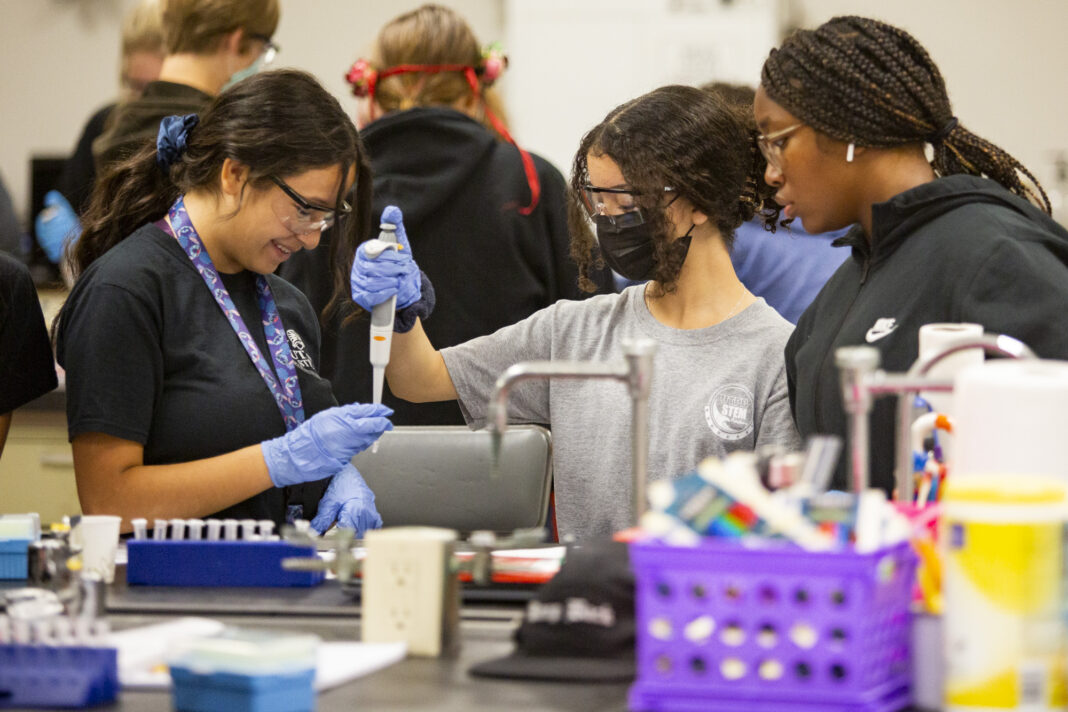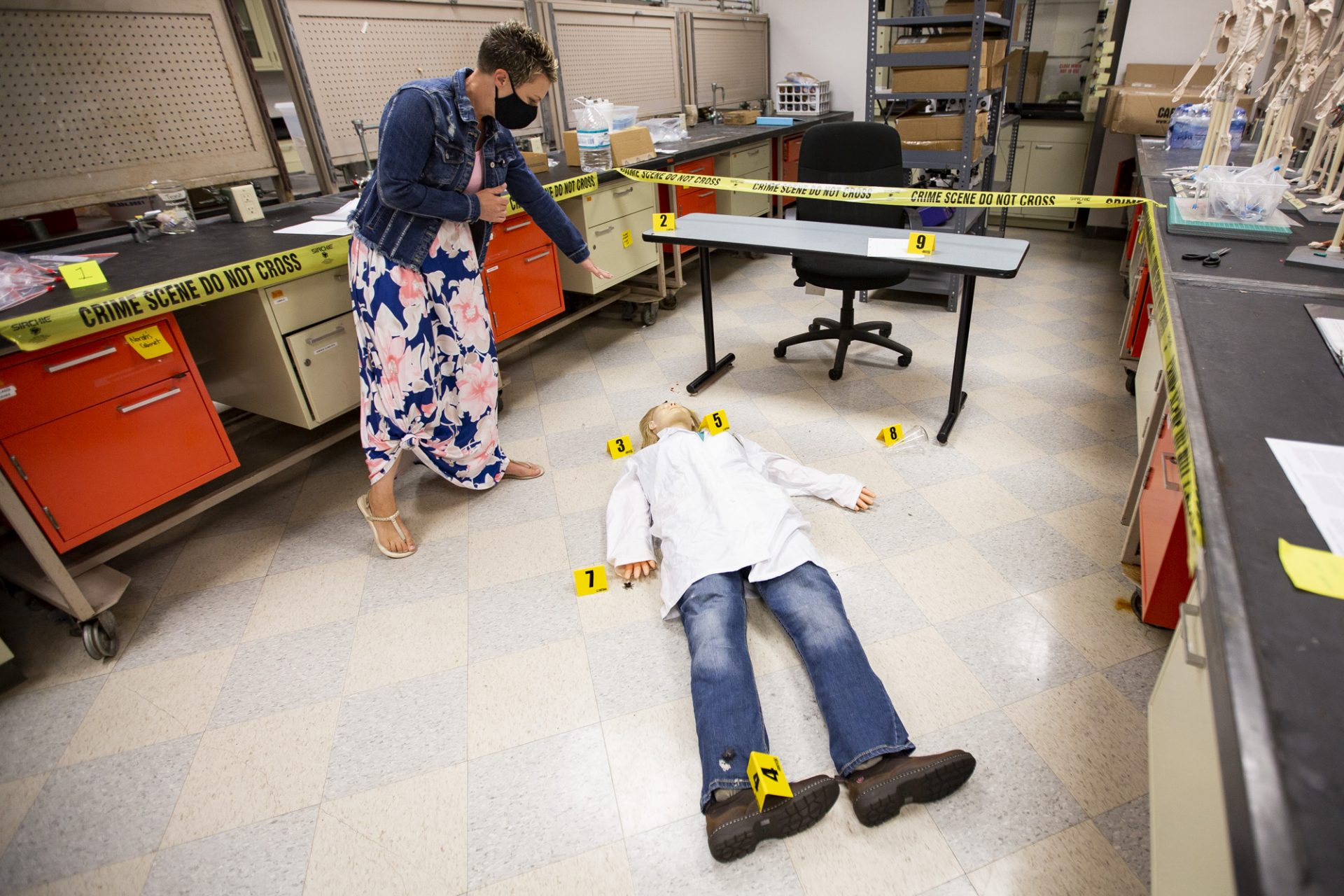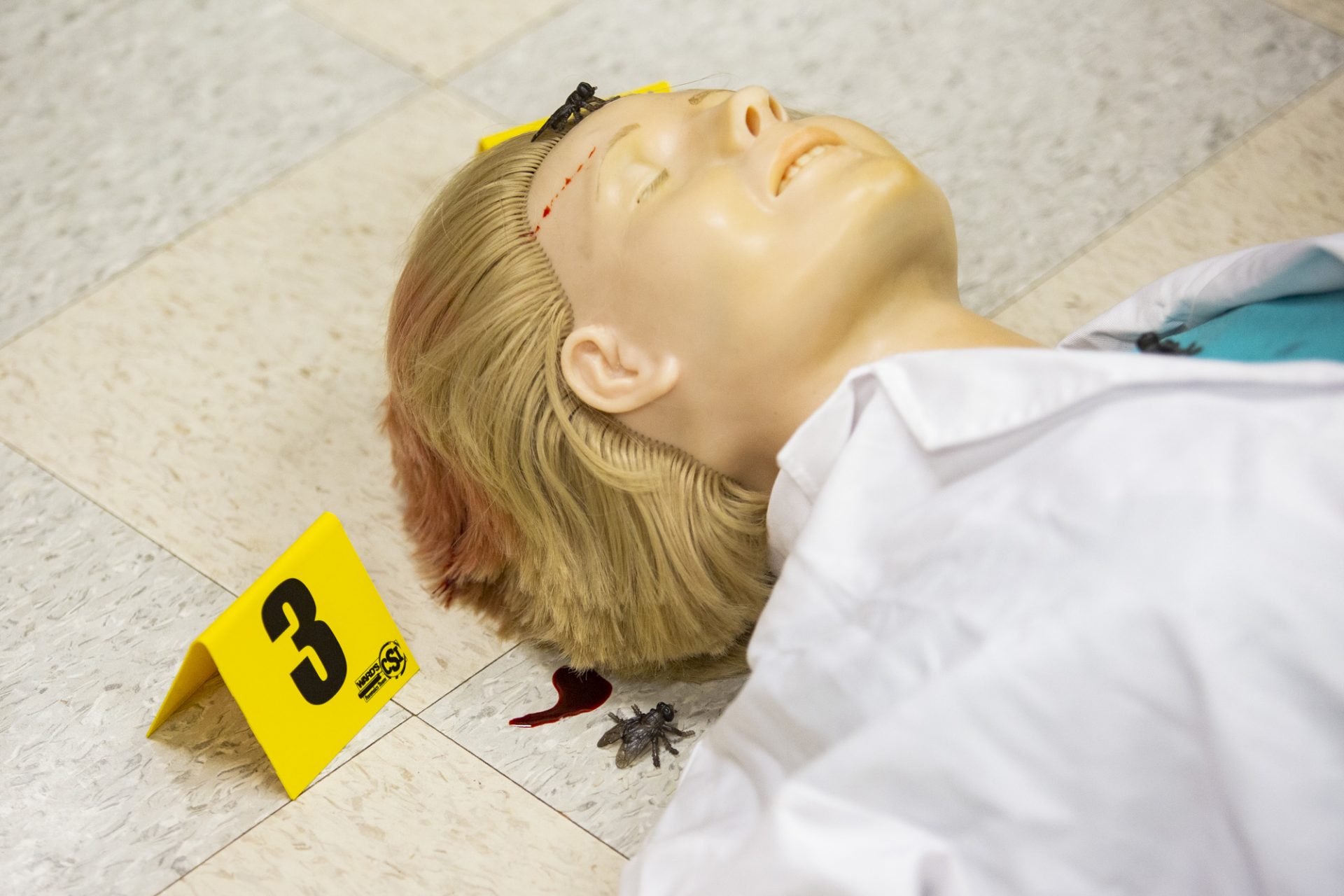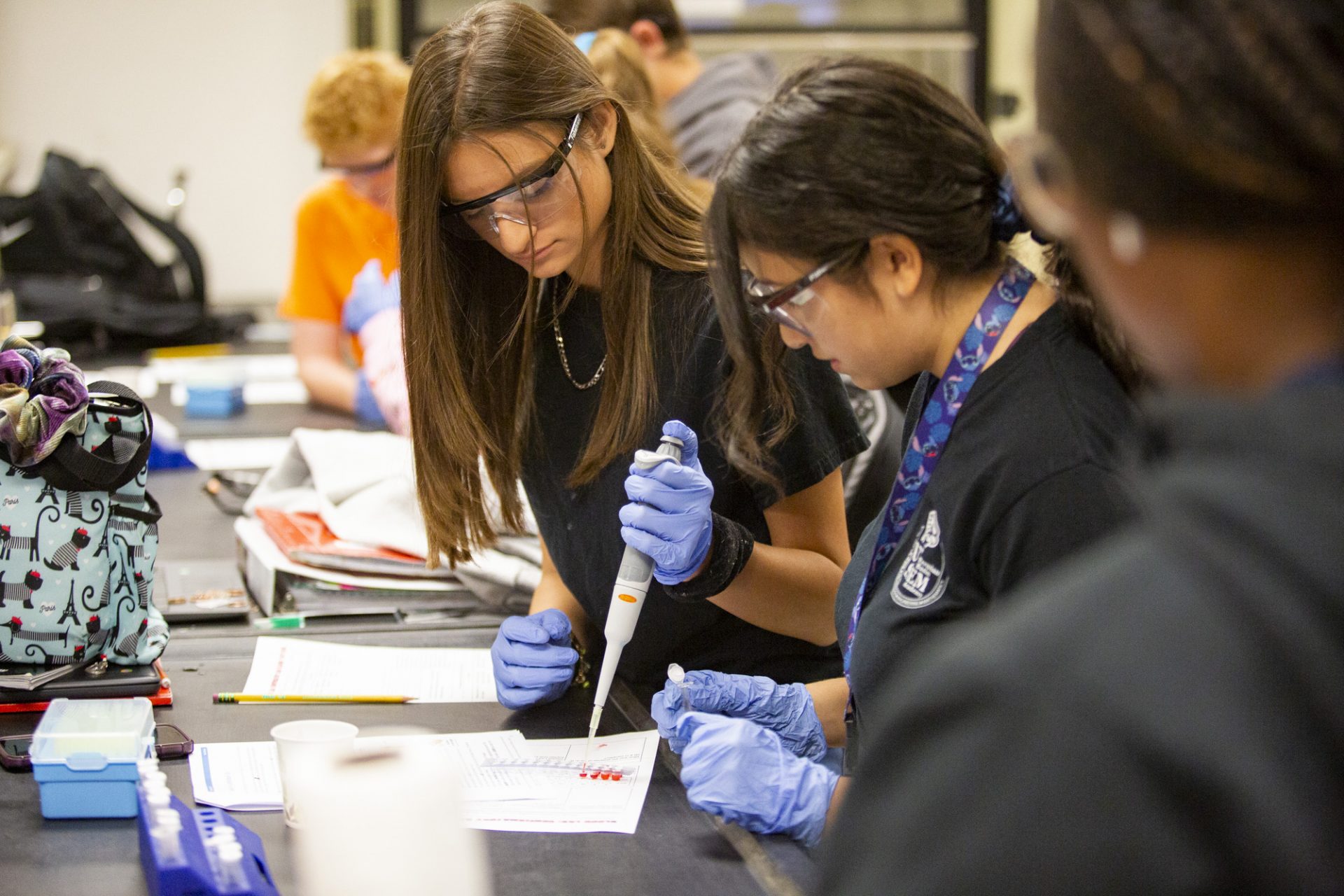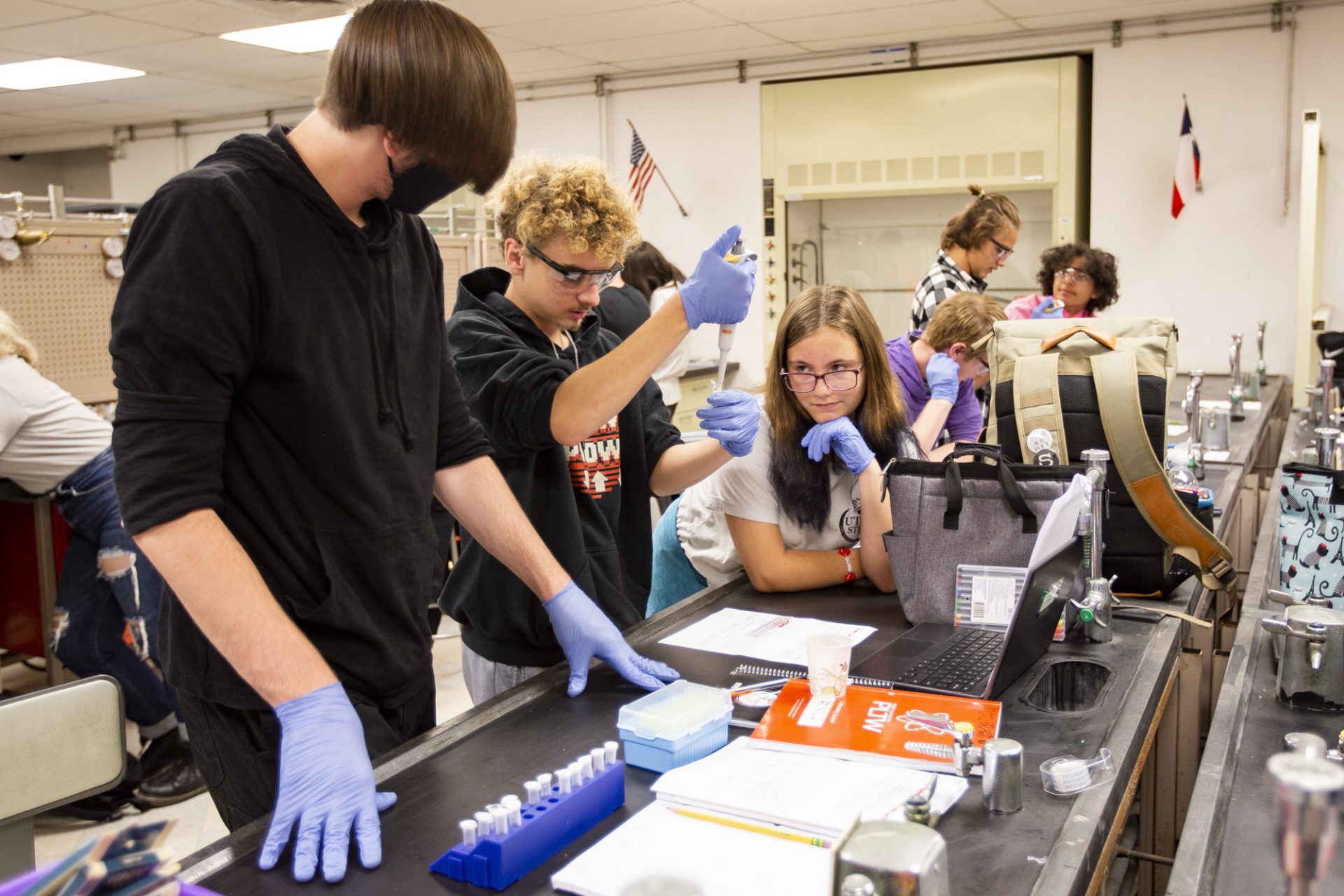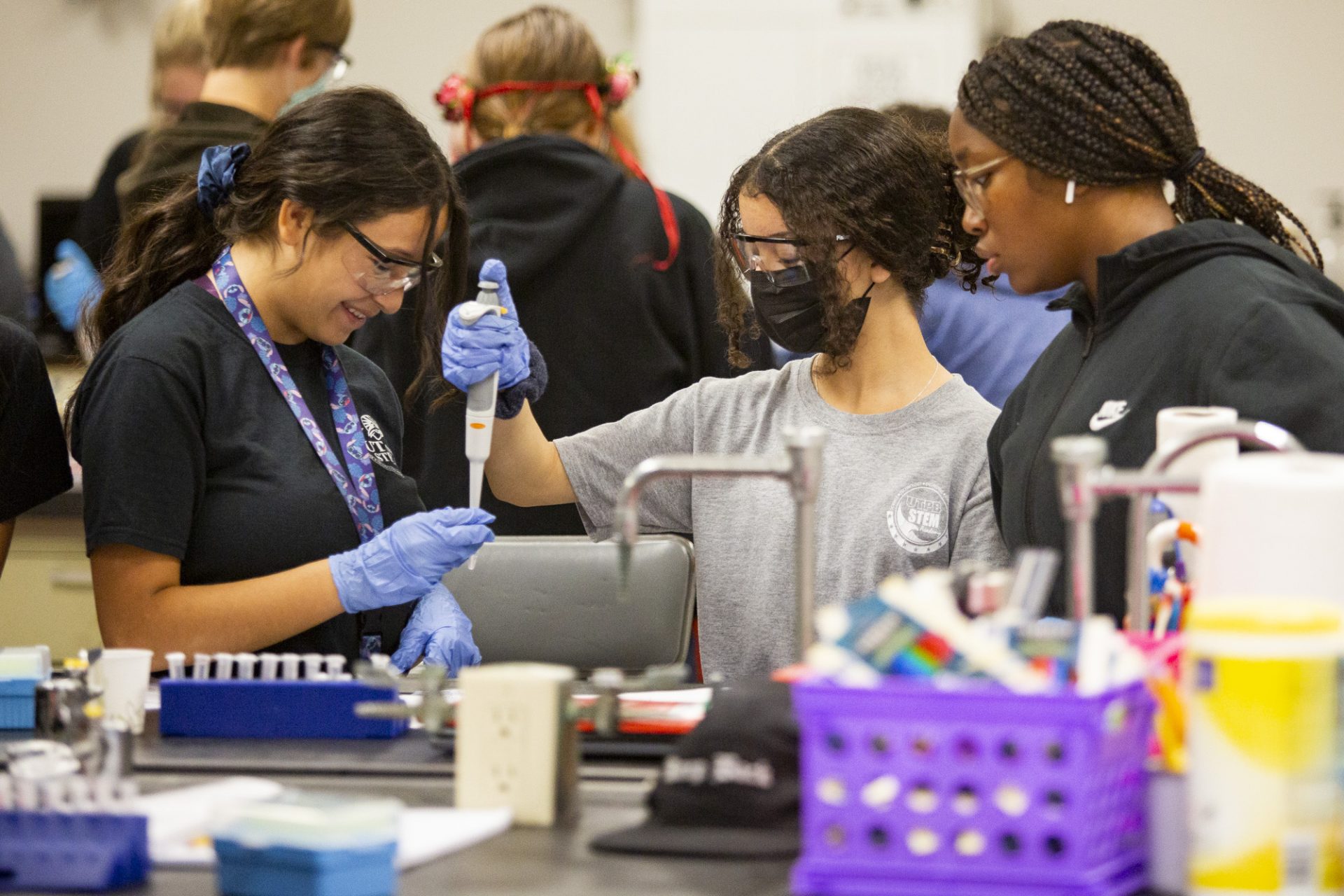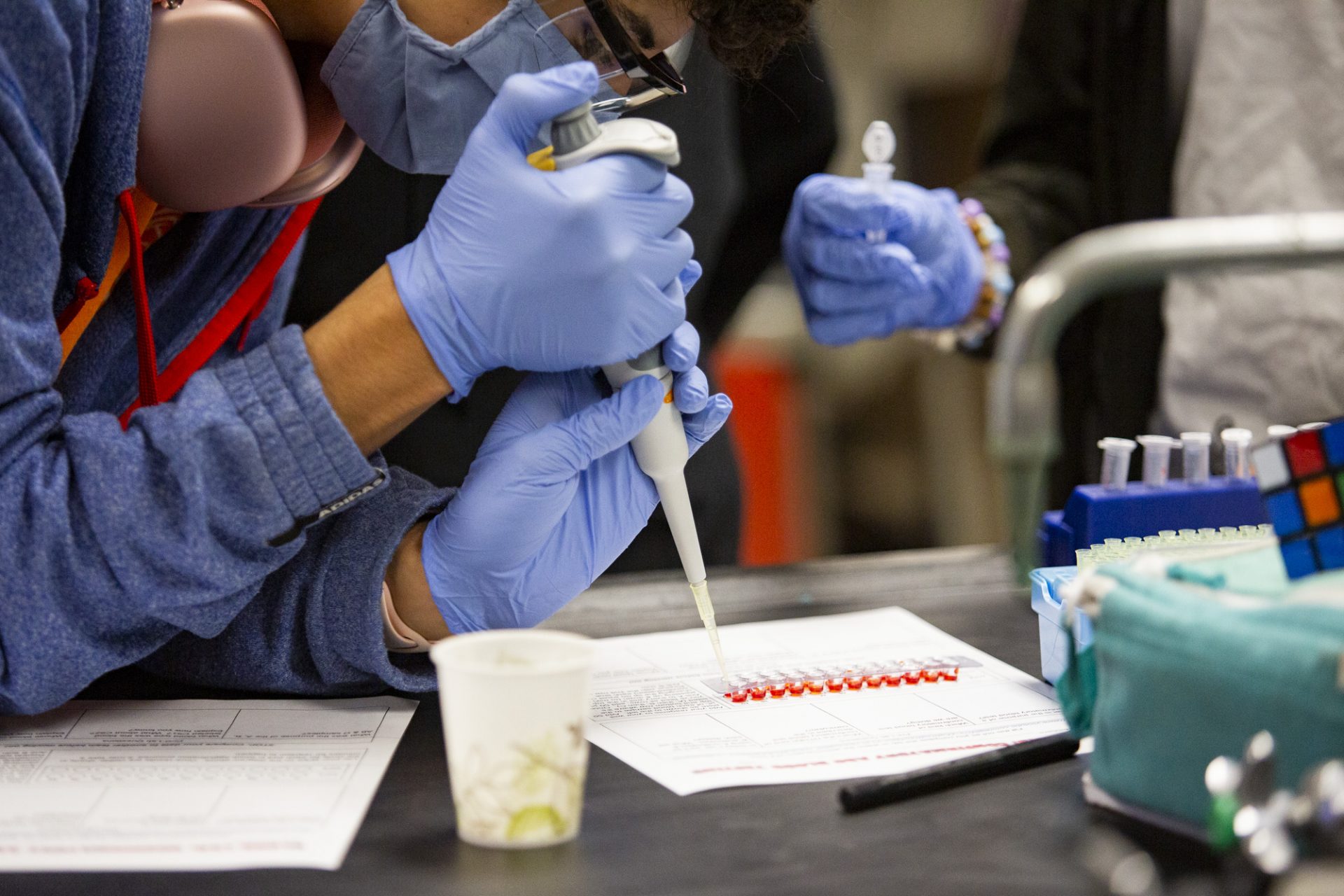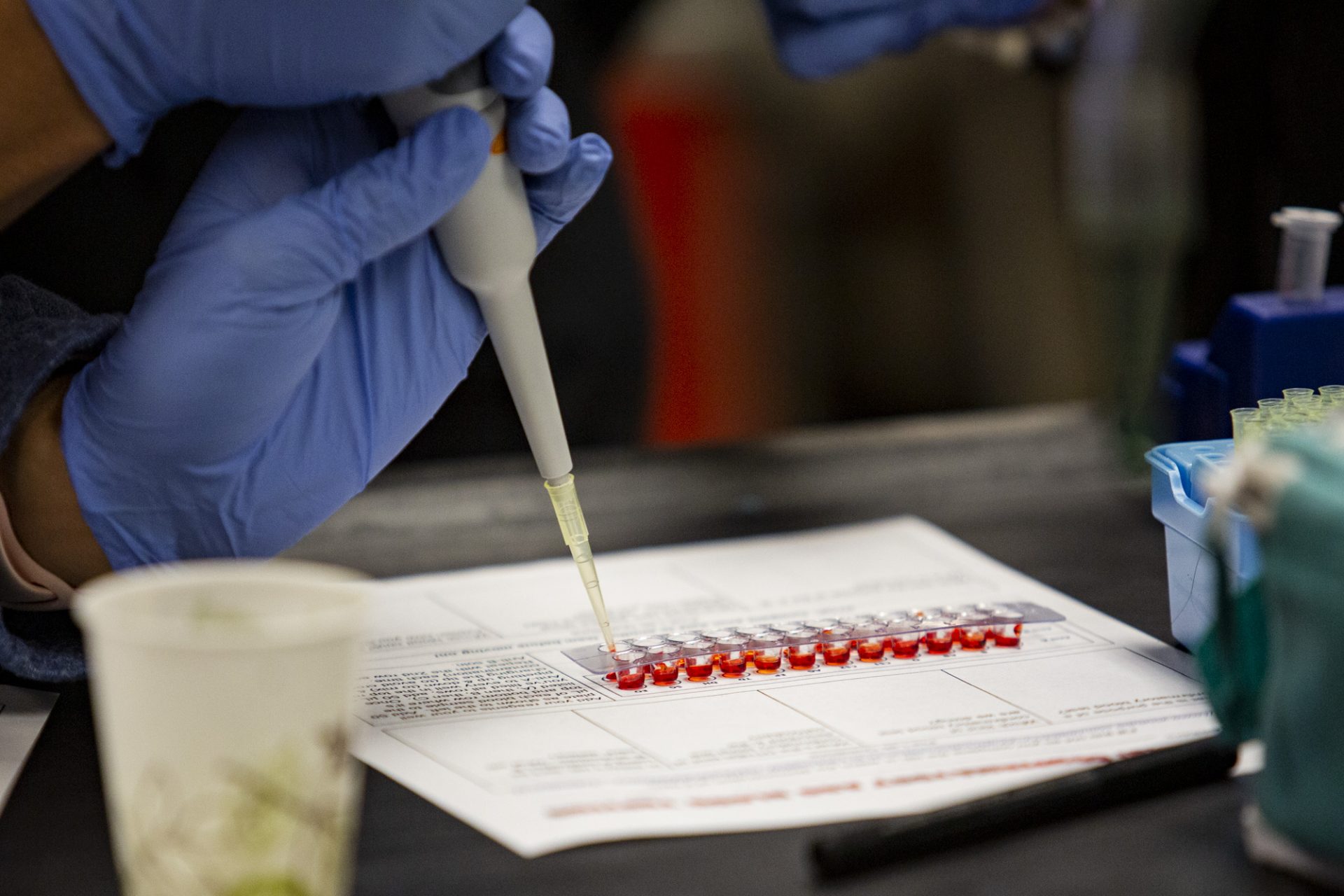University of Texas Permian Basin STEM Academy students are talking a deep dive into biomedical science by working on a crime scene investigation.
Project Lead the Way biomedical science teacher Karey Grametbaur said her 35 students are figuring out crime scene investigation and what it means to be a crime scene analyst, what it means to be working in a lab if you’re doing the blood testing and things of that type.
The students have been introduced to the victim, Anna Garcia, and found drops of blood. They learned she already had a cut on her head.
This particular class is called Principles of Biomedical Science and it’s a track students chose called the biomed track, Grametbaur said. It exposes them to the many jobs related to the biomedical and medical fields.
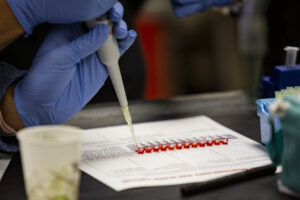
“… They just get the chance to explore all sorts of stuff, to see what sticks with them, so that when they are ready to make the choice for college, they know they are at least a little bit more informed about what they do or do not like,” Grametbaur said.
The students in her class are in the first year of the track, so most of them are ninth graders.
And this is a first-year class and it’s the first year of their track, so most of these students are ninth graders.
“They will take one class a year until they graduate and there’s four different classes in this track,” Grametbaur said.
Second-year students are taking human body systems. They’ll go into depth on each system and how it works.
The third year class is called medical interventions. In a recent scenario in that class, they finished a case involving some college students.
“… One of them came in sick to the clinic and we had to go through all the process of how to diagnose her. We did DNA on her to figure out what was in her body who and we used a national database program called the BLAST” to reach a diagnosis for her, which was meningitis.
“Now we’re about to figure out how to start treating her meningitis. It took us six weeks to figure out she had meningitis. … We’re about to start figuring out how she how to treat her,” Grametbaur said.
The fourth year class is called biomedical innovations. In a recent class, they were figuring out what to put in an emergency room facility and how it would be set up.
“… They actually made some models of those for the presentation, so it gives them so many opportunities to figure out if they like the biomedical sciences and maybe which one before they even graduate from high school. It’s an amazing program,” she added.
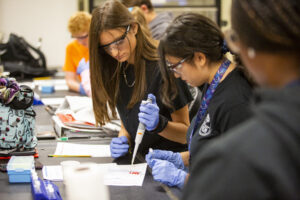
During her class on a recent Monday, Grametbaur said they were conducting a confirmatory test for blood type. She noted that they aren’t using real blood.
Grametbaur added that she had to research many of the things the students are learning before teaching them.
“It was a little bit more complicated … than what I had in college, so it took me a little bit of time to adjust and adapt to that. I’m still having to research a little bit before each topic. … It’s a lot of fun, though. It’s very interesting stuff and I had degrees in biology, so it’s definitely a passion of mine,” Grametbaur said.
Ninth graders Cassie Browning, 14, and Bryan Nash, 15, are two of Grametbaur’s students.
“I’ve always like everything to do with science and that’s pretty much my only reasoning,” for taking the class, Nash said.
Browning said she was drawn to the class because it was the best match for the career she’s thinking of pursuing.
She’s thinking of archaeology.
“This is a little a little out there, but it’s the best choice compared to the other two choices I could have gone (with) …,” Browning said.
Nash said he has enjoyed everything about the course.
“I like doing the little experiments she has us do. They’re really fascinating,” he said. … I haven’t decided what career I want to go into for science, this is giving me a taste of one part of it and eventually others, so I’m just enjoying figuring out what I do and don’t like about it,” Nash said.
Like Nash, Browning said there are a lot of different things she likes about it.
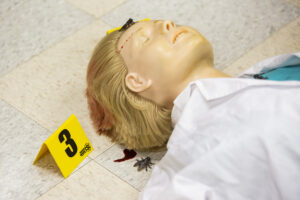
“I especially like these little experiments because you see them on … crime shows and stuff. And I’m like, that’s cool. And to be able to actually do them myself do see how they work is just really interesting,” Browning said.
She added that she will probably stay in this track.
“… I’m learning a lot right now and I thought when I got in I was going to be all really queasy and stuff because I thought we were going to do a lot of cutting open bodies and dissections and that wasn’t always the my favorite thing. But I think I think I’ll be okay,” Browning said.
Nash said he would probably stay with this track, too.
“… I enjoy what we’re doing … I’d like to expand a little bit, but this is really, really fun and fascinating,” Nash said.
Joleigh Hall, a 14-year-old freshman, said she wants to become a neonatal surgeon, so “I’ve always just been into this kind of stuff.”
Hall said she enjoyed crime scene investigation.
“… I never really thought I was into that until this class,” she said. “I really enjoy it. You learn a lot of stuff about like different ways people die.”

